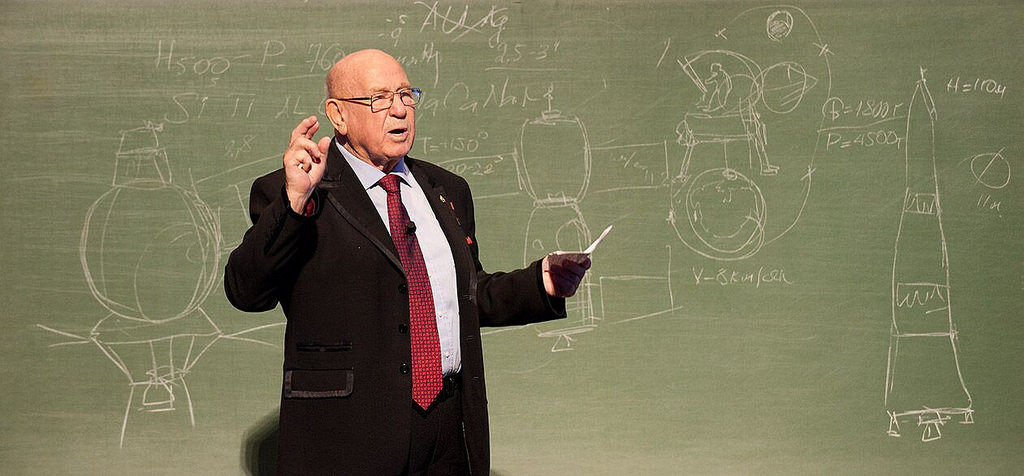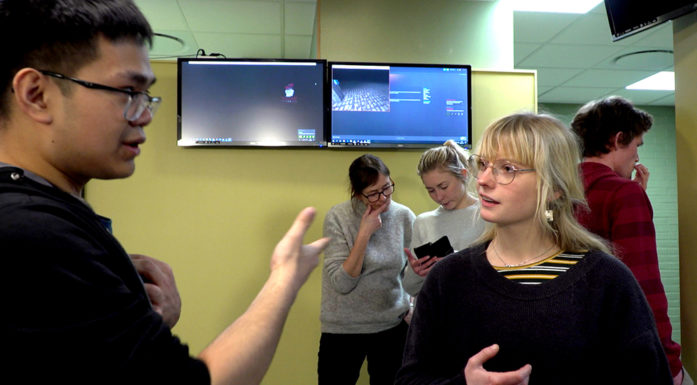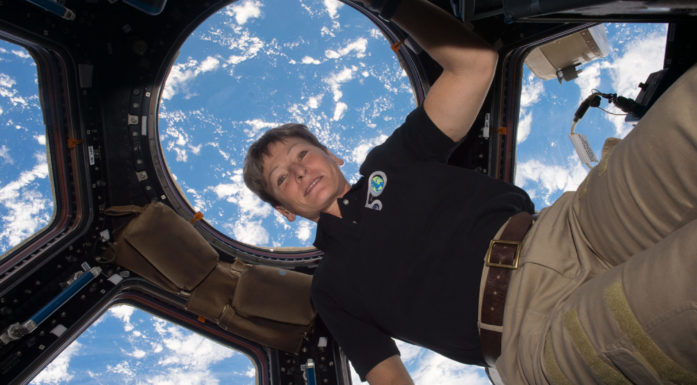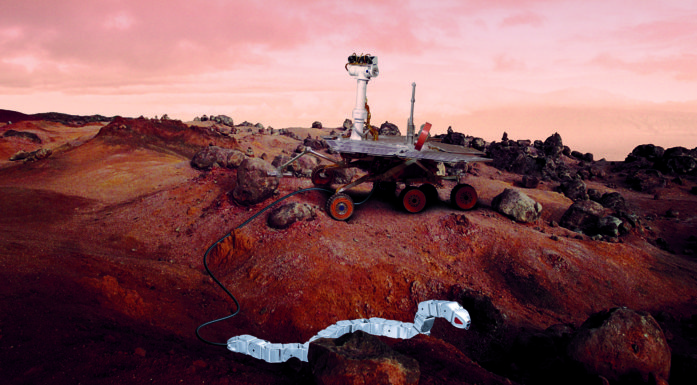Medicine factories in space to shape the future of space travel
He was the very first person to walk in space. A rescue team on skis brought him to safety after an emergency landing in the Siberian forest. Now, Alexei Leonov is coming to Trondheim.
SPACE TRAVEL: For twelve minutes and nine seconds he floated outside the spacecraft. His safety cord was just over five meters long. Far below he saw our beautiful blue globe. Around him he saw infinity.
It was four years after Yuri Gagarin orbited the Earth and four years before Neil Armstrong and Buzz Aldrin set foot on the moon. It was the first time in the history of humanity that someone was walking in space.
“Leonov was said to have a six percent chance of survival,” says Garik Israelian, an astrophysicist and the founder of the Starmus Science Festival in Trondheim.
“The strongest impression is the silence”
Russian cosmonaut Leonov is one of ten astronauts who will be coming to Trondheim for the Starmus Festival in June 2017. Three of the ten astronauts have been on the moon. One of them is Buzz Aldrin.
“The strongest impression from space is the silence. I can still hear how my heart was beating, and how I could hear my breath, in the silence of space,” Leonov said in a new interview with Russia Today, in connection with Starmus.
“Only in space can you feel the grandeur and the great magnitude of everything surrounding the human being. Everyone who’s been in space sees time and space differently afterwards. You see infinity,” Leonov said in the same interview.
Spacesuit inflated like a balloon
He had undergone intensive training on life in a weightless state. The Russians had successfully sent several unmanned spacecraft into orbit around the Earth. Everything was as clear as it could be for something that had never been done before. But then something happened that nobody had anticipated: Leonov’s spacesuit inflated like a balloon when he stepped into the vacuum of space, to the point where he wasn’t able to re-enter the spacecraft. He tried several times, but the suit had become too big for the opening.
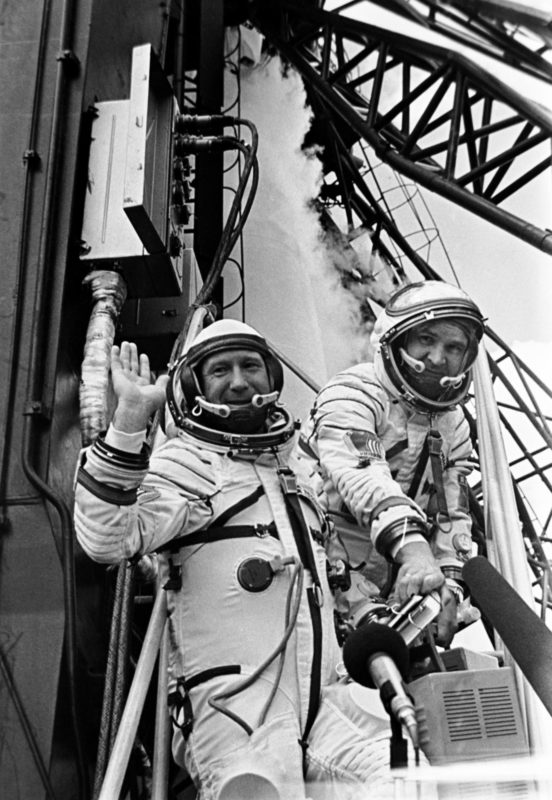
Ten years after his historic first spacewalk, Alexei Leonov participated in the Apollo-Soyuz programme, which entailed the docking of an American Apollo Command/Service Module (CSM) with a Soviet Soyuz 7K-TM spacecraft. Leonov, left, is shown here with his flight engineer for the mission, Valeri Kubasov. Photo: NASA archives.
The oxygen tank began to drain, and there were no instructions for what to do. He sweated so much that it felt like a bucket of water had been poured over him inside the suit. In the end he chose a bold maneuver: he lowered the pressure in the spacesuit and let out some air. On his fifth attempt he was able to enter the spacecraft again. The crew had carried out the mission was so far, but the dangerous journey was far from over.
Awarded hero medal twice
Then the spacecraft’s automated re-entry system failed, leaving Leonov’s partner to manually control the spacecraft for landing. With no control over their direction, they were thrown off course and landed deep in the Siberian forest. It was winter, and they were surrounded by deep snow. Rescuers were flown in part way by helicopter and then lowered down to the ground, where they made their way on skis and found Leonov and his partner. On the third day, Leonov and his partner skied out to an open space in the woods where a helicopter picked them up.
Leonov has twice been awarded the Hero of the Soviet Union medal of honour.
The European premiere of the film “First Time”, about Alexei Leonov’s spacewalk, will be aired during this year’s Starmus Festival.
Russian moon missions hamstrung
“I’m disappointed that Russians didn’t make it to the moon first, but the bureaucrats curtailed everything. We had the technical pieces in place, but we lacked the political will to send someone to the moon. The bureaucracy was too sluggish,” says Leonov.
In his interview with Russia Today, he says there’s a lot of talk about future space missions to both Mars and the Moon, but little action.
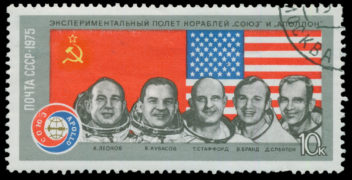
A Soviet commemorative stamp from 1975 shows Russian and US astronauts from the Apollo-Soyuz test project. Alexei Leonov is at far left. Photo: Thinkstock
Mars requires cooperation
“In ten years we would be able to land on the moon and put up a completely finished base station there. A base will make it easier to live on the moon than in a space station. But so far it’s just talk. The same goes for Mars. In order for Mars to be colonized, several countries will have to cooperate and politicians need to make the decision. Then it will be possible, and only then will it happen,” says Leonov.
He believes that factories in space are the future of space travel.
“What would be realistic would be to create automated factories in a chain around the Earth. We could create unique crystals and medicines with very special properties that aren’t possible to produce on Earth. It’s possible and it’s also cost effective,” Leonov says.
Leonov is one of 10 astronauts who will be a part of the Starmus Science Festival from 18-23 June in Trondheim. Buy tickets and see the full programme at www.ntnu.edu/starmus. NTNU is this year’s Starmus Festival host.
Ekaterina Prasolova-Førland is an associate professor at NTNU who translated the interview from Russia Today, and also contributed historical information for this article.
